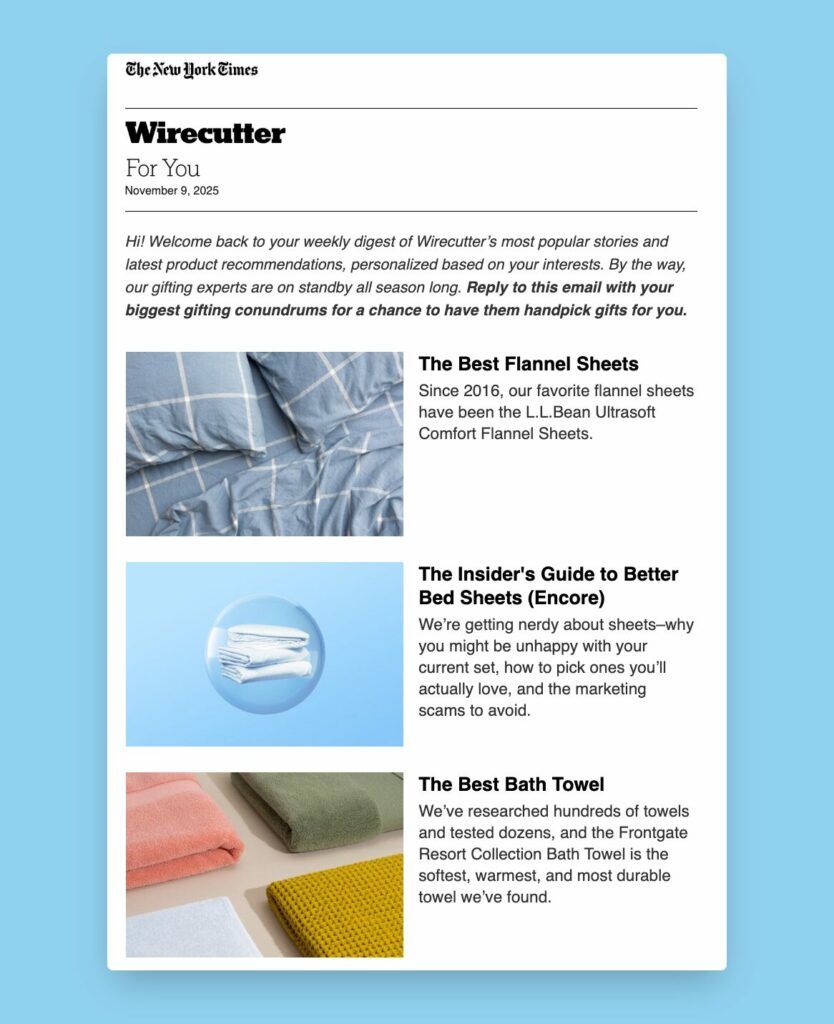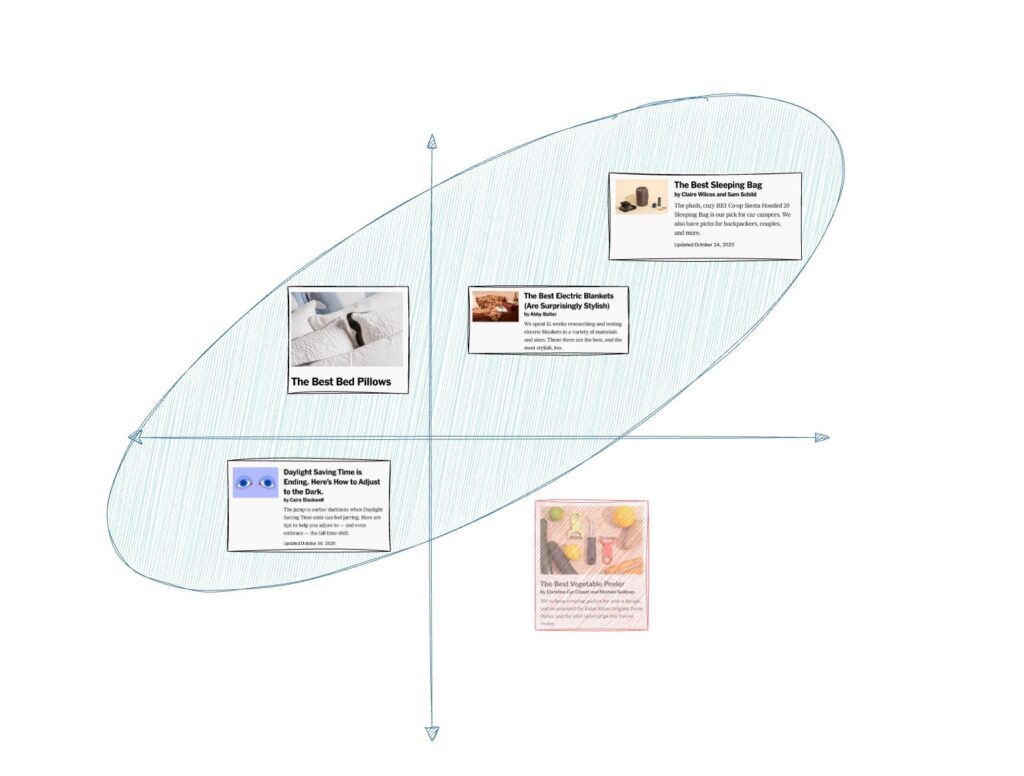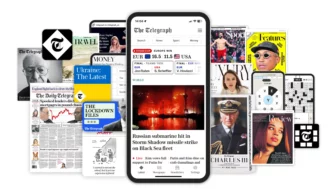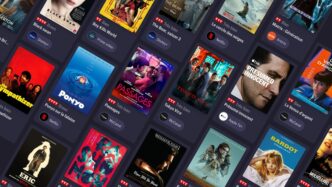

Anil Chitrapu is a Senior Product Manager at Wirecutter (The New York Times), focused on audience growth, AI, and personalization.
In this article, Anil takes a closer look into the operational choices, guardrails, and tech powering Wirecutter For You, the new email that tailors article recommendations to each reader - without compromising editorial judgment or inbox trust.
Wirecutter, The New York Times’ product recommendation service, shares the same commitment to rigorous journalism that defines our broader newsroom. The mission has always been to help readers make confident, informed decisions about the products in their lives – from the best gifts to the most reliable home appliances – through reporting that is diligent, transparent, and practical.
But reaching readers today requires more than great reporting; it demands a thoughtful approach to how we surface that journalism. As information overload grows and attention spans shorten, the challenge expands beyond what we publish to how we make sure each reader finds what’s most relevant to them. Within Wirecutter, we’ve long debated how to use technology to serve that mission responsibly. Our goal has never been to replace the editorial voice that makes our product recommendations distinct, but to use personalization as a way to extend it: to help every reader find the next right thing at the right time, in a way that still feels unmistakably like us. Every design decision flowed from that principle: personalization should extend editorial judgment, not replace it.
This idea led to the creation of Wirecutter For You, a weekly email that pairs our journalism with a robust personalization model to deliver tailored article recommendations. The system we created is designed for flexibility and oversight, allowing us to refine its rules and outputs in tandem. In the sections that follow, we’ll share why we built it, how it works, and what this taught us about bridging editorial craft and algorithmic systems.
Why we built it
As we entered Q4 (our yearly peak shopping period), Wirecutter wanted to build a resilient and automated channel to help our readers find their way to more of our journalism. Even with our deep library, many readers only ever see a fraction of Wirecutter’s journalism. Personalization gave us a way to surface the right story at the right moment. Our goal was to develop a product that would be able to learn from a reader’s browsing history while maintaining Wirecutter’s standards.
At a high level, we wanted to answer a simple question: how could we introduce personalization to Wirecutter in a way that still felt entirely editorial and intentional? For us, that meant starting in a space where we could test carefully, learn quickly, and retain full control over tone and trust – and email was the perfect place to do that. It gave us a contained environment to experiment with personalization primitives, measure impact, and ensure deliverability, all without changing the on-site experience until we got signal.
We designed the program’s format with three primary goals.
- First, we wanted to build a weekly reading habit that complemented our existing editorial newsletters – adding value without displacing what readers already trusted.
- Second, we used the email as a controlled space to learn: testing personalization logic, tracking engagement and trust metrics, and validating that the signals we captured could scale across unique email sends.
- Finally, we treated this as an early framework for how personalization should operate across Wirecutter: establishing the rules, measurement standards, and editorial guardrails that future products could build on.
Because this was new territory, we defined success less by traffic spikes and more by durable reader signals: quality over clicks, inbox trust and deliverability, and long-term engagement that deepened – not diluted – our relationship with subscribers.
What we launched
After a small hardcoded pilot earlier in the year gave us confidence in the format, we began developing a dynamic weekly email that could scale – one capable of dynamically tailoring article recommendations for readers while staying true to our editorial standards. The goal was simple but ambitious: to create a product that felt more personal than automated, guided by the same standards our newsroom applies to any published work.
We launched Wirecutter For You as a weekly Sunday send, designed to deliver personalized story recommendations alongside a concise, editor-written lede. Each version draws from a reader’s recent engagement and a curated, editor-approved content pool. We started with a small, highly engaged audience to monitor performance and maintain deliverability as we introduced a new sender identity.

The speed from concept to launch (less than a month!) came down to a few factors: strong pilot results that got buy-in across the organization, existing NYT infrastructure we were able to build on, deliberately narrow scope (editorial content only, no product recommendations yet), and close partnership between Wirecutter and Times teams as we swarmed on this opportunity space.
How it works
Define a safe content pool
To ensure we can provide a valuable and fresh service for our readers, we first limited our eligible content to a subset of the Wirecutter corpus. This includes editorial guardrails on page types we want to exclude, as well as known sensitive categories (like adult product guides) that we exclude by default. On the content logic side, we also only include pieces that have been published or updated recently – this helps make sure that we are showing our audiences the most up-to-date journalism and reducing duplicate recommendations over a reader’s history.
Score content candidates
The machine learning model we stood up for this blends three lightweight signals: reader history similarity (“more like what you’ve recently read”), freshness (new and recently updated), and popularity (“what’s trending right now across Wirecutter”). While the relative weights differ by slot, the guiding principle remains consistent – prioritize content that is similar to a subscriber’s reading history, then stack rank by freshness, and finally tap into overarching popularity signals. The outcome of these inputs is an algorithm endpoint that surfaces meaningful continuity between what a reader engages with and what we publish.
We worked closely with our NYT partners on the machine learning side (AlgoRecs) to stand this logic up for our MVP. You can read more in-depth about how they think about personalization here, but at a high level, our recommendation engine uses text embeddings to understand relationships between articles.
Each piece of content – say, a vacuum review, a guide to the best air purifiers, or a seasonal gardening feature – is represented as a vector in a multi‑dimensional space, where proximity indicates conceptual similarity. The embeddings are trained on article content and corresponding metadata, allowing our internal systems to recognize when two stories share topics, tone, or taxonomies even if they don’t explicitly share keywords.
As readers engage with more content in areas like Home & Garden or Kitchen, their interaction history forms a composite profile vector. This enables the model to locate new articles in the same “neighborhood” of interests and elevate them for inclusion.

In practice, that means a logged-in reader who’s been browsing our Best Coffee Maker product guide might next see a grinder guide, a shortform piece on reusable filters, or even a related kitchen appliance story – each selected because it sits nearby in embedding space. The algorithm doesn’t just resurface pieces the reader has already seen; it expands outward from their demonstrated interests to related topics that preserve editorial diversity while staying relevant. Over the course of a week, each reader’s aggregated browsing activity passes through this model to generate a list of related stories. This output then feeds directly into the personalized block of their Wirecutter For You email.

A secondary benefit of this functionality is that it encourages recipients of Wirecutter For You to engage with Wirecutter more frequently and, crucially, while logged in. When readers browse under their account, we can connect their activity to a persistent profile, allowing our systems to understand their interests with greater accuracy and surface more relevant recommendations over time. The more they read, the better the experience becomes. It creates a virtuous loop: deeper engagement yields smarter personalization, which in turn strengthens the relationship between reader and brand. That dynamic ultimately advances a key business goal for Wirecutter and The New York Times: converting lower-affinity, anonymous readership into a loyal, logged-in audience who receives a more relevant and cohesive service across our journalism and technology.
Validate and add finishing touches
Before the email gets formalized and packaged for our send pipeline, we add on a brief intro lede to contextualize the personalized send to our readers. We work closely with our partners on editorial to tee up the content for subscribers, and also include a lightweight call for replies.

We have seen that our readers for this and other sends use their inbox as a channel to share feedback, suggestions, and requests that we can action on across our editorial programming calendar! It’s also a positive signal for email clients to know that our newsletters are high-quality and routed to more visible folders in inboxes (i.e. Primary or Updates tabs).
Package and send
Our internal email platform handles the final packaging and delivery. Each week, the system batches eligible subscribers while maintaining a holdout group to monitor long-term impact and potential cannibalization of our editorial newsletters. We automatically filter out inactive readers to ensure we’re only sending personalized recommendations to people actively engaging with Wirecutter. Our internal deliverability infrastructure handles the formatting and send process for each individual email, with monitoring tools in place to quickly catch and resolve any delivery issues.

Early signals
So far, the program has shown strong performance, with engagement metrics consistently rising across each send, now yielding hundreds of thousands of monthly opens and tens of thousands of clicks per send. Reader replies to our intro continue to be a strong qualitative signal, helping us validate both the tone and the personalization logic. While it is early in the product’s tenure, we are currently not seeing signs of cannibalization of our editorial newsletters, reassuring us that personalization can complement, rather than compete with, our existing editorial programming.
With this signal, our next phase focuses on expanding the audience, carefully widening distribution while keeping the same guardrails that protect quality and trust. Our focus will also turn to refining the personalization logic – adjusting the knobs that influence how readers receive recommendations, and experimenting with new ways to explain why they are seeing certain content. Some ideas we’re exploring: introducing reader-facing cues like “Because you read X, you might like Y” to give subscribers more transparency into how their recommendations are generated, and testing section-based elements of the newsletter that draw connections between the categories readers engage with most – surfacing related stories in dedicated blocks within the email.
Longer term, we plan to extend this framework beyond editorial content, incorporating Wirecutter’s product recommendations into the mix. That will require additional technical integration and close coordination with our newsroom, but it opens the door to a richer, more dynamic format that blends journalism, commerce signals, and personalization in a single trusted experience.
What we’ve learned
While this project was purpose-built for Wirecutter, the underlying framework can easily be adapted to other newsrooms or publishing programs. What matters most is having a clear “primitive” – whether that’s an article, recipe, video, or podcast episode – and a structured way to represent and tag those entities. The broader playbook is highly repurposable: define a safe content pool, build lightweight similarity models, and use editorial oversight to ensure every recommendation still feels deliberate and brand‑consistent.
- Maintain editorial control and quality standards.
From the beginning, we optimized for session quality rather than raw click-through rates – defining what a “good” newsletter → site visit actually looks like and building our system around that outcome. We also limited our candidate pool so editors could recognize every recommendation, ensuring freshness and relevance stayed balanced. Setting up lightweight evaluation processes where stakeholders could share feedback on content recommendations also proved valuable as we quickly stood this product up. Just as important: we built in a “no-send” path from day one: if the system can’t confidently produce a strong lineup for a subscriber, it’s better to skip that week entirely than send something subpar.
- Start narrow and measure rigorously.
Testing these concepts benefits from starting with a small, highly engaged cohort – both to train inbox placement algorithms and to observe behavior without risking your broader subscriber base. In practice, that meant closely tracking open rates, click-through rates, and unsubscribe rates to measure habituation and spot fatigue early. We’re also monitoring spam signals and folder placements across major email clients – essentially making sure our emails land in Primary or Updates tabs, not Promotions folders. We set up the program to gather quantitative learnings from the start: a holdout group for long-term impact measurement, directional engagement data, and ESP folder placement insights to catch spam signals early. These counter-metrics help us understand not just what’s working, but what might be causing fatigue or disengagement before it becomes a problem.
- Keep the technical architecture flexible.
Wherever possible, we made the template “headless” – focusing on content logic, audience criteria, and editorial judgment rather than getting bogged down in CMS complexity. This approach required close collaboration between editorial and audience teams to ensure we had the right framing around personalization, but it gave us the flexibility to iterate quickly on the parts that mattered most.
Ultimately, I’m proud that we’re coming out of this pilot with a shared understanding that personalization doesn’t have to mean prediction. It can mean respect: understanding what readers already trust you for, and delivering more of it, deliberately.
Team & acknowledgments
A cross‑functional crew across editorial, analytics, engineering, and our NYT messaging partners built and shipped this in weeks. The shared principle was simple: personalization should feel like an extension of editorial judgment, not a replacement for it.












